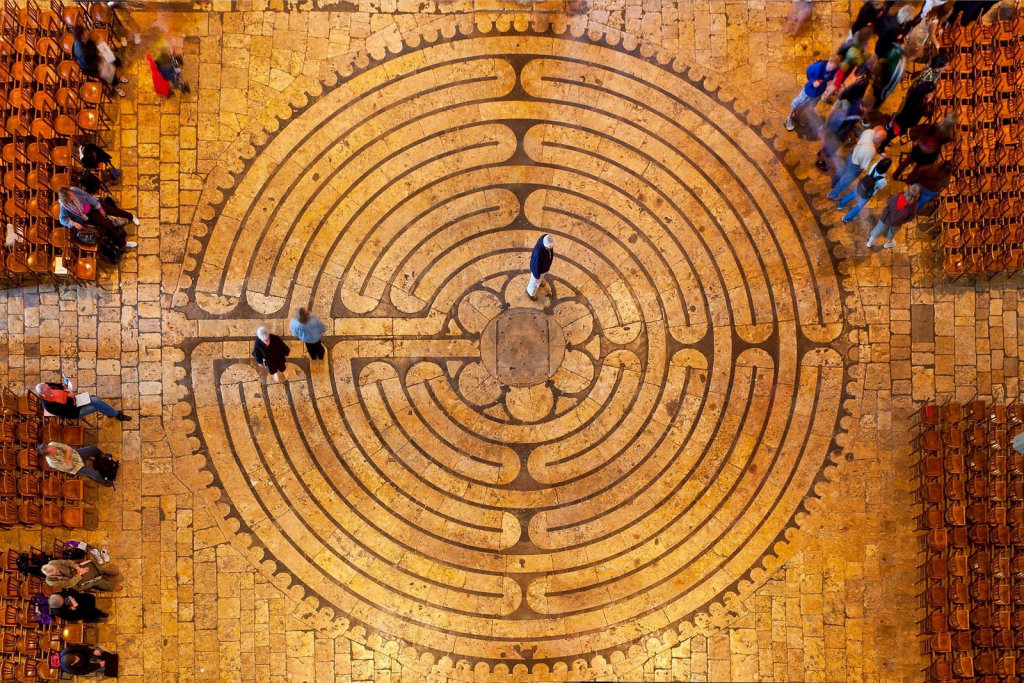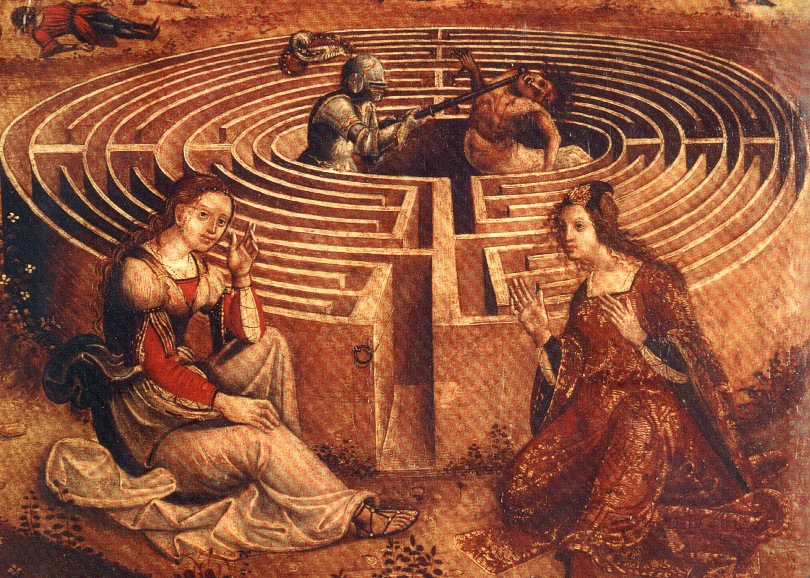The labyrinth is a powerful and enduring symbol that has woven its way through various cultures and epochs, capturing human imagination with its intricate paths and profound symbolism. From the legendary labyrinth of the Minotaur to medieval cathedral designs and modern therapeutic uses, labyrinths have served multiple purposes, each steeped in rich history and fascinating stories. Let’s delve into the captivating journey of the labyrinth, exploring its origins, its connections to dark magic, the truths behind the myths, and the evidence that has been unearthed over centuries.
Ancient Civilizations and the Birth of the Labyrinth
Minoan Civilization (Crete, Greece)
The labyrinth’s story arguably begins in ancient Crete, within the Minoan civilization. According to Greek mythology, King Minos of Crete commissioned the brilliant inventor Daedalus to construct an elaborate labyrinth beneath his palace to imprison the Minotaur, a fearsome creature that was half-man, half-bull. This labyrinth was a complex, maze-like structure from which escape was nearly impossible. The hero Theseus eventually navigated the labyrinth, killing the Minotaur with the help of Ariadne’s thread, which he used to trace his way back out.
The historical palace of Knossos, with its intricate layout, might have inspired this myth. Archaeological findings at Knossos reveal a sprawling complex with numerous rooms, corridors, and levels that could easily give rise to tales of a bewildering maze.
The Egyptian Labyrinth
Herodotus, the Greek historian, described another labyrinth in ancient Egypt, near Lake Moeris. This labyrinth was said to be a massive structure with thousands of rooms and winding passages, surpassing even the grandeur of the pyramids. Though its exact location remains a mystery and subject to scholarly debate, some believe it might have been a temple or a mortuary complex. While no definitive archaeological evidence has been found to confirm the existence of this labyrinth, its legend persists, adding to the labyrinth’s aura of mystery.

Classical Antiquity: Symbolism and Art
During the classical period in Greece and Rome, labyrinths became popular motifs in art, pottery, and mosaics. These labyrinths were not physical structures but symbolic representations, often depicted as complex patterns on vases and floors. They were used to symbolize the complexity of life, the journey of the soul, and the path to enlightenment.
The Medieval Period: Spiritual Journeys
Labyrinths in Cathedrals
The medieval era saw a profound transformation in the labyrinth’s use and symbolism. Labyrinths were incorporated into the floors of many European cathedrals, most famously in Chartres Cathedral in France. These labyrinths, often with 11 circuits, were used for contemplative prayer and meditation. Pilgrims would walk the labyrinth’s path as a form of penance or spiritual journey, reflecting on their faith and seeking divine guidance. The medieval labyrinth thus became a sacred space for introspection and devotion, embodying the Christian path to salvation.

Renaissance to Modern Era: Revival and Transformation
Gardens and Mazes
The Renaissance sparked a revival of interest in labyrinths, transforming them into elaborate garden mazes in European estates. These hedge mazes, designed for both amusement and contemplation, became symbols of intellectual and aesthetic sophistication. The Hampton Court Maze in England, created in the late 17th century, remains one of the most famous examples of this tradition.
Modern Therapeutic and Spiritual Practices
In contemporary times, labyrinths have found new life as tools for meditation, relaxation, and spiritual practice. Modern labyrinths come in various designs, from the classical seven-circuit labyrinth to more intricate patterns, and are used in parks, hospitals, and spiritual centers. Walking a labyrinth today is often seen as a way to reduce stress, promote mindfulness, and facilitate personal reflection.
The Dark Side: Labyrinths and Dark Magic
The labyrinth’s intricate and mysterious nature has also given rise to associations with dark magic and the occult. In some traditions, labyrinths were thought to be used for rituals and ceremonies invoking supernatural powers. The winding paths were believed to trap malevolent spirits or protect sacred spaces from evil forces. In literature and folklore, labyrinths sometimes symbolize the unknown and the dangerous, embodying humanity’s fear of getting lost in the darkness of their own psyche.

Truths and Evidence: Separating Myth from Reality
Archaeological Discoveries
Archaeological evidence has played a crucial role in unraveling the truths behind labyrinth myths. Excavations at Knossos have provided insights into the labyrinthine nature of Minoan architecture, suggesting that the palace’s complexity may have inspired the Minotaur myth. Similarly, the study of medieval cathedrals has revealed how labyrinths were used for spiritual purposes, aligning with historical records.
Historical Accounts and Artifacts
Historical accounts, such as those by Herodotus and other ancient historians, offer glimpses into the significance of labyrinths in different cultures. Artifacts like pottery, mosaics, and architectural remnants further enrich our understanding of how labyrinths were perceived and utilized throughout history.
Conclusion: The Enduring Legacy of the Labyrinth
From ancient myths to modern mindfulness practices, the labyrinth remains a powerful and evocative symbol. Its history is a tapestry of myth and reality, dark magic and sacred journeys, artistic expression, and therapeutic use. Whether as a path to spiritual enlightenment, a symbol of life’s complexities, or a tool for meditation, the labyrinth continues to captivate and inspire, offering a timeless journey into the heart of human experience.

